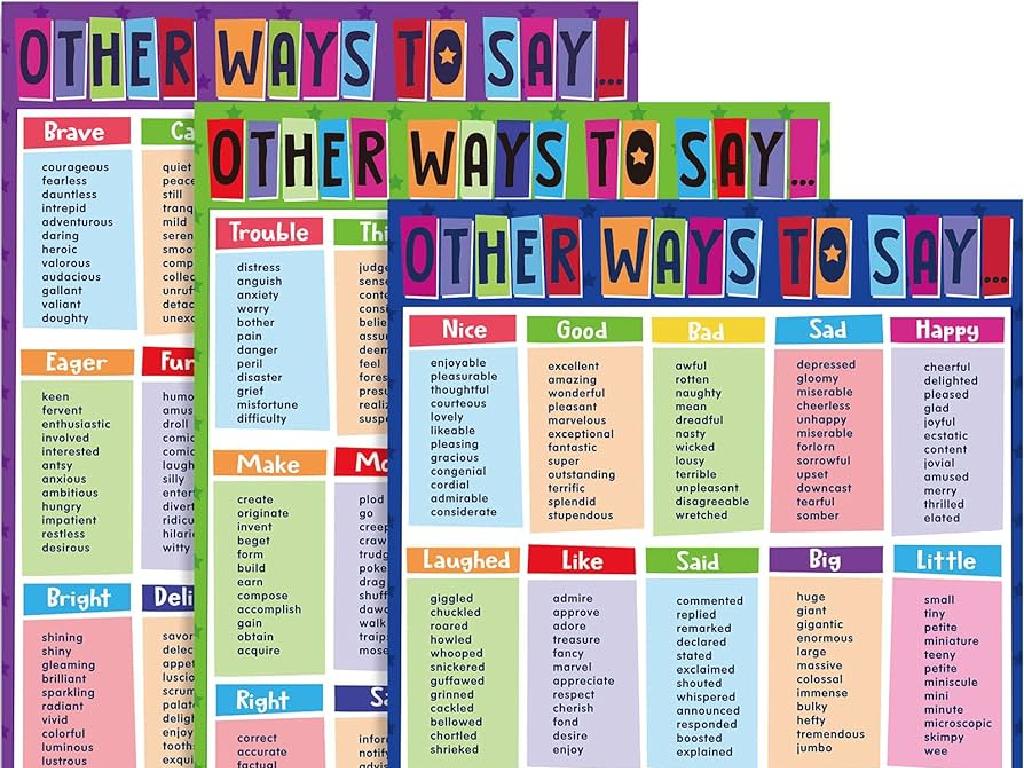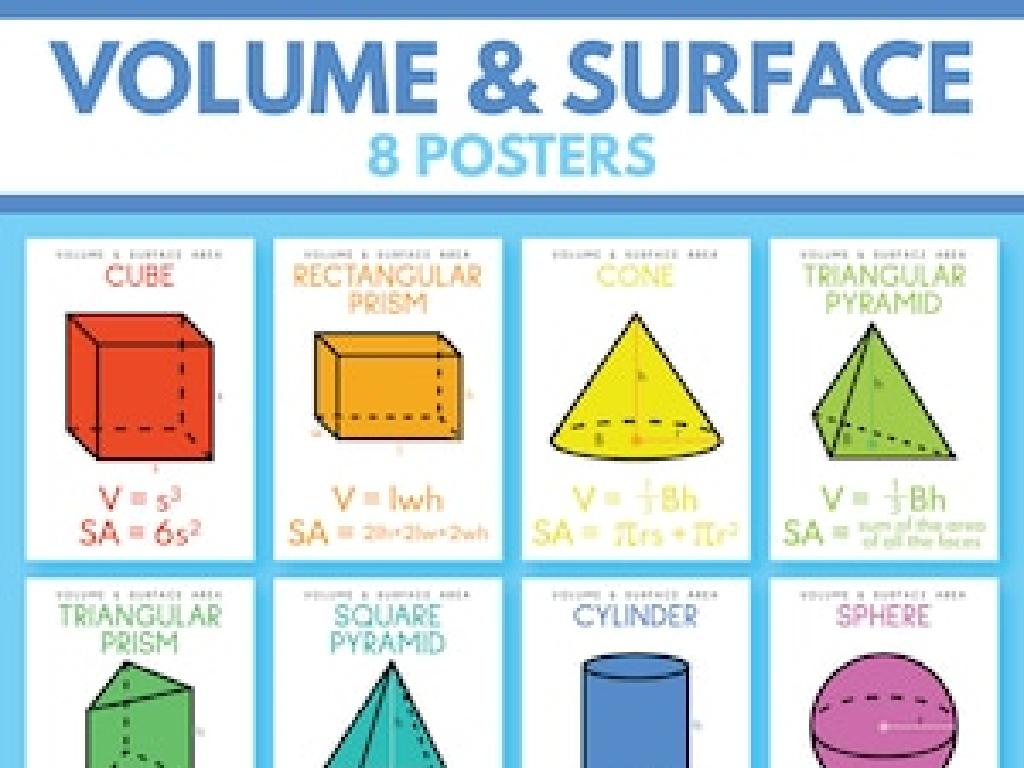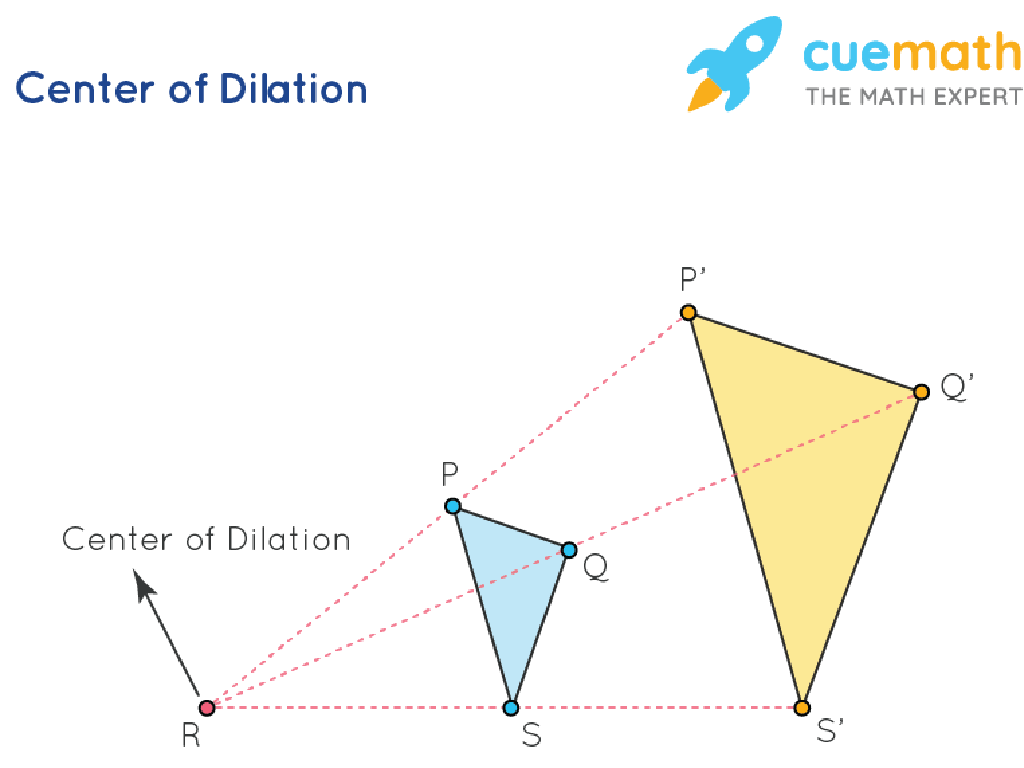Form And Use Plurals Of Compound Nouns
Subject: Language arts
Grade: Eighth grade
Topic: Nouns
Please LOG IN to download the presentation. Access is available to registered users only.
View More Content
Plurals of Compound Nouns
– Understanding compound nouns
– Two words combined to create a new meaning, e.g., ‘toothbrush’, ‘hairbrush’
– Forming plurals of compound nouns
– Add ‘s’ or ‘es’ to the most significant word, usually the second part
– Rules for making plurals
– Some change the first part, others the last, or the whole word
– Practice with examples
– ‘Toothbrushes’, ‘mothers-in-law’, ‘passers-by’
|
This slide introduces the concept of compound nouns and their plural forms, which is a key component of understanding noun usage in English. Compound nouns are two or more words that function as a single noun. The challenge for students is to learn the correct way to make these nouns plural, as the rules can vary. Some compound nouns pluralize the main part of the word, while others may have irregular plural forms. Provide students with clear examples and encourage them to come up with their own. During the lesson, engage the class with practice exercises to reinforce the rules and ensure they can apply them to different compound nouns they may encounter.
Understanding Nouns: The Basics
– Define a noun
– A noun represents a person, place, thing, or idea
– Categories of nouns
– Common nouns, proper nouns, concrete nouns, abstract nouns, and compound nouns
– Examples of nouns
– ‘cat’ (animal), ‘school’ (place), ‘happiness’ (idea)
– Significance of nouns in sentences
– Nouns serve as subjects or objects within sentences, providing clarity
|
Begin with a quick review of what a noun is, ensuring students recall that it can represent a person, place, thing, or idea. Highlight the different categories of nouns, emphasizing the focus on compound nouns for this lesson. Provide clear examples for each category, using simple words that students are familiar with, such as ‘cat’ for a common noun, ‘school’ for a concrete noun, and ‘happiness’ for an abstract noun. Explain the role of nouns in sentences, as they are crucial for indicating what or who the sentence is about. This foundational understanding will be important as students learn to form and use plurals of compound nouns in subsequent slides.
Plurals of Compound Nouns
– Understanding Compound Nouns
– A compound noun is made up of two or more words that function as a single noun.
– Combining Words to Form Nouns
– Words like ‘tooth’ and ‘brush’ merge to create ‘toothbrush’.
– Examples: ‘toothbrush’, ‘haircut’, ‘mailbox’
– ‘Toothbrushes’, ‘haircuts’, ‘mailboxes’ show compound nouns in plural form.
– Forming Plurals of Compound Nouns
|
This slide introduces the concept of compound nouns to the students, explaining that they are formed by combining two or more words to create a new noun with a specific meaning. Provide clear examples such as ‘toothbrush’, ‘haircut’, and ‘mailbox’ to illustrate the concept. Then, guide students on how to form plurals of these nouns, emphasizing the part of the compound noun that is made plural (e.g., ‘toothbrushes’ instead of ‘teethbrush’). Encourage students to identify the base word that takes the plural form. In the next class, practice with more examples and have students create a list of compound nouns and their plural forms.
Forming Plurals of Compound Nouns
– Making compound nouns plural
– How do we change compound nouns to talk about more than one?
– Rule 1: Pluralize the significant word
– Often, the main noun in the compound becomes plural.
– Example: ‘mothers-in-law’
– ‘Mothers-in-law’ is correct, not ‘mother-in-laws’.
|
When teaching students to form plurals of compound nouns, emphasize that the most significant word usually becomes plural. This is often the main noun in the compound. For example, ‘mothers-in-law’ pluralizes ‘mother’ because it is the key noun, while ‘in-law’ remains unchanged. This rule helps maintain the meaning of the compound noun when referring to more than one. Provide additional examples like ‘passers-by’ and ‘attorneys-general’ to reinforce the concept. Encourage students to identify the main noun in compound nouns and practice making them plural, ensuring they understand that not all compound nouns follow this rule, but it is a good general guideline.
Plural Rules for Compound Nouns
– Use ‘and’ or ‘or’ in compounds
– When two nouns are connected by ‘and’ or ‘or’, they form a compound noun.
– Pluralize the final element
– Only the last noun in the compound takes a plural form.
– Examples: ‘passers-by’, ‘editors-in-chief’
– ‘Passers-by’ refers to multiple people passing by, ‘editors-in-chief’ to multiple chief editors.
|
This slide focuses on the specific rule for forming plurals of compound nouns when they are joined by ‘and’ or ‘or’. Emphasize that in such cases, only the final element of the compound noun is made plural. Provide students with examples and ask them to create more examples in pairs or small groups. This activity will help them understand the rule’s application and reinforce their learning through practice. Encourage students to look for such compound nouns in their reading materials and bring them to class for discussion.
Plural Forms of Compound Nouns: Exceptions
– Irregular plural forms exist
– ‘man-of-war’ to ‘men-of-war’
Similar to ‘man-of-war’, ‘passer-by’ becomes ‘passers-by’
– Use a dictionary for accuracy
– Practice with more examples
Try ‘mother-in-law’ and ‘commander-in-chief’
|
This slide addresses the exceptions in forming plurals of compound nouns, which do not follow the standard rules. Highlight the importance of recognizing irregular plural forms, such as ‘man-of-war’ changing to ‘men-of-war’. Emphasize the use of a dictionary as a reliable resource for confirming the correct pluralization of compound nouns. Encourage students to practice with additional examples to solidify their understanding. In-class activities could include creating a list of irregular compound nouns, using them in sentences, or a dictionary lookup race to find correct plural forms.
Let’s Practice Plurals of Compound Nouns!
– Plural of ‘toothbrush’
– Add ‘es’ to make ‘toothbrushes’
– Plural of ‘sister-in-law’
– Add ‘es’ to ‘sister’ to make ‘sisters-in-law’
– Plural of ‘commander-in-chief’
– Add ‘s’ to ‘chief’ to make ‘commanders-in-chief’
– Rules for forming plurals
– Generally, add ‘s’ or ‘es’ to the main word in a compound noun
|
This slide is an interactive class activity to practice forming plurals of compound nouns. Start by explaining that for most compound nouns, we make the plural form by adding ‘s’ or ‘es’ to the principal word. For ‘toothbrush’, the plural is ‘toothbrushes’ because it is a regular noun that just needs an ‘es’ at the end. For hyphenated compound nouns like ‘sister-in-law’ and ‘commander-in-chief’, the plural is formed by adding ‘s’ or ‘es’ to the primary noun within the compound (‘sister’ becomes ‘sisters’, ‘chief’ becomes ‘chiefs’). Encourage students to identify the primary noun in compound words and apply the pluralization rules. Have students work in pairs or small groups to come up with additional examples and share them with the class. This will reinforce their understanding and provide practice in a collaborative setting.
Class Activity: Pluralizing Compound Nouns
– Pair up and list 5 compound nouns
– Write their plural forms
– Explain the pluralization rule used
– For example, ‘toothbrush’ becomes ‘toothbrushes’, adding ‘es’ to the end
– Prepare for class discussion
|
This activity is designed to engage students in collaborative learning and to deepen their understanding of how to form plurals of compound nouns. Students should work in pairs to encourage discussion and peer learning. They will list five compound nouns, such as ‘sister-in-law’ or ‘passerby’, and then write their plural forms, like ‘sisters-in-law’ or ‘passersby’. Encourage them to explain the grammatical rule they applied, which could involve where to place the ‘s’ or ‘es’, or changing the word order. After completing the task, each pair will share their findings with the class, fostering a group discussion on the rules of pluralization for compound nouns. This will help students learn from each other and clarify any misconceptions. Provide guidance and additional examples if necessary.
Conclusion & Homework: Mastering Plural Compound Nouns
– Excellent progress on plural compound nouns
– Homework: Craft 10 sentences
– Incorporate plural compound nouns you’ve learned
– Use plural forms of compound nouns
– Examples: ‘mothers-in-law’, ‘passers-by’
– Apply the rules we’ve studied
– Ensure correct pluralization as per our lesson
|
Students have shown great understanding of plural compound nouns in today’s lesson. The homework is designed to reinforce their learning by applying the rules to create sentences with plural compound nouns. Encourage creativity and the use of a variety of examples. Remind them to refer to the rules discussed in class, such as adding ‘s’ to the principal word in the compound noun or pluralizing the modifying noun. This exercise will help solidify their grasp of the concept and prepare them for more advanced usage of compound nouns in language.






